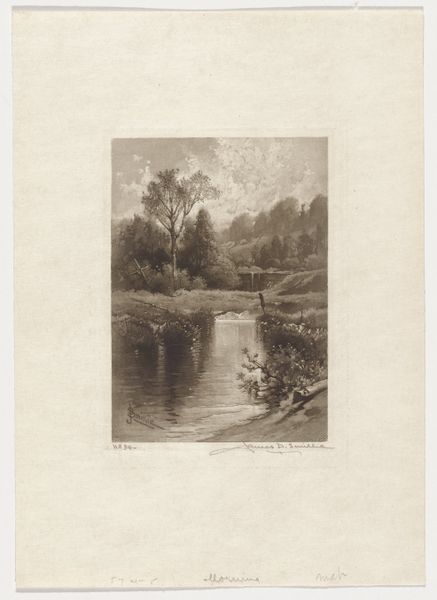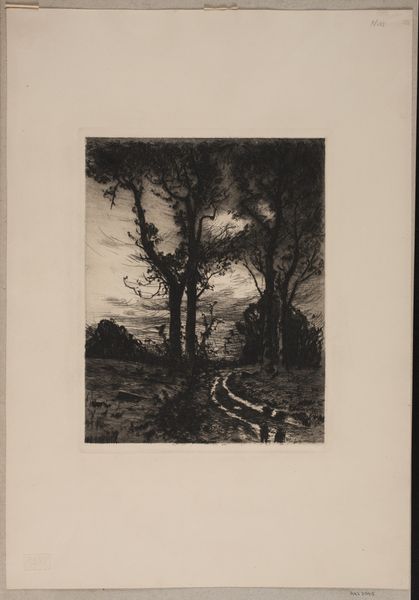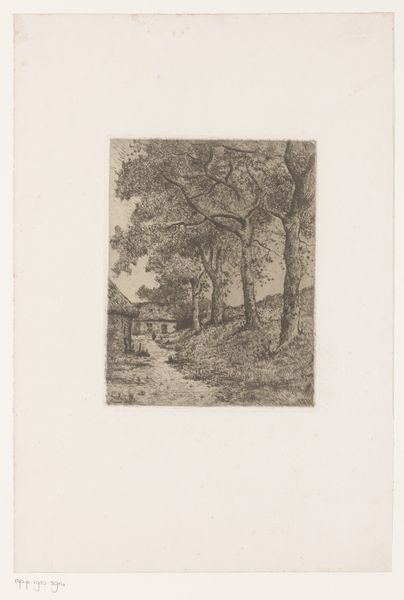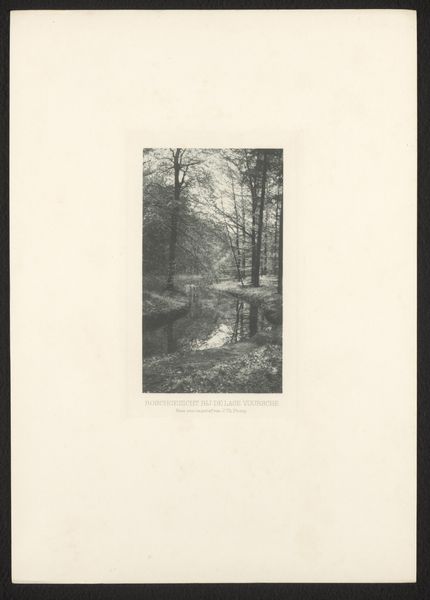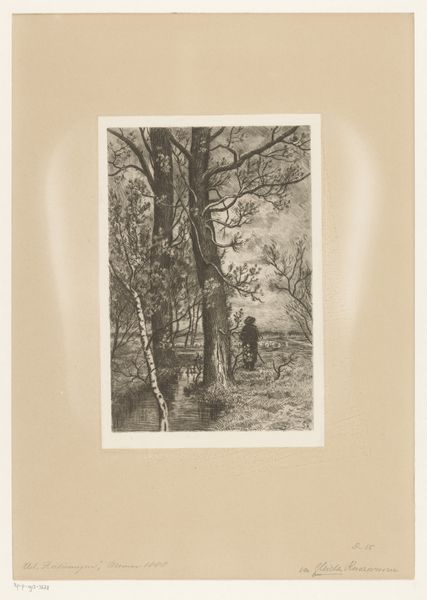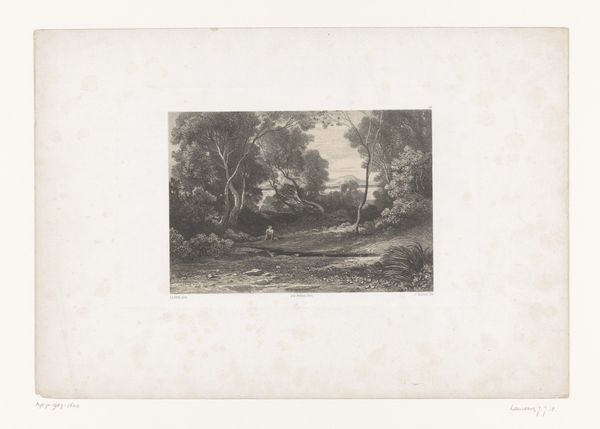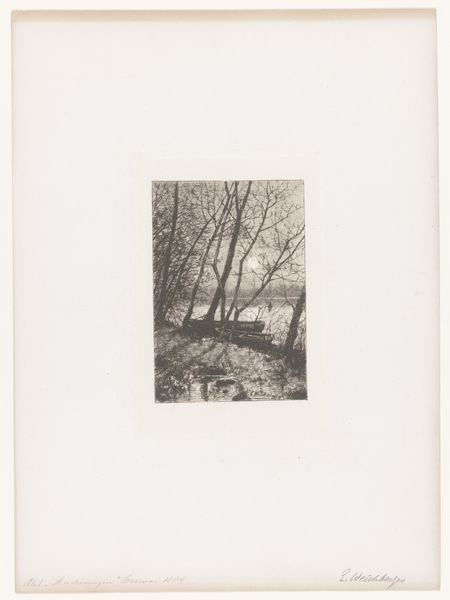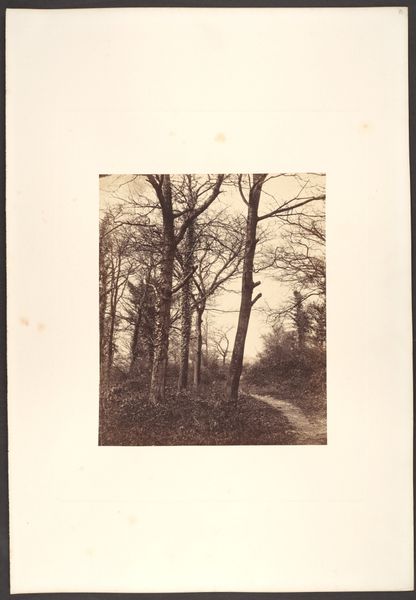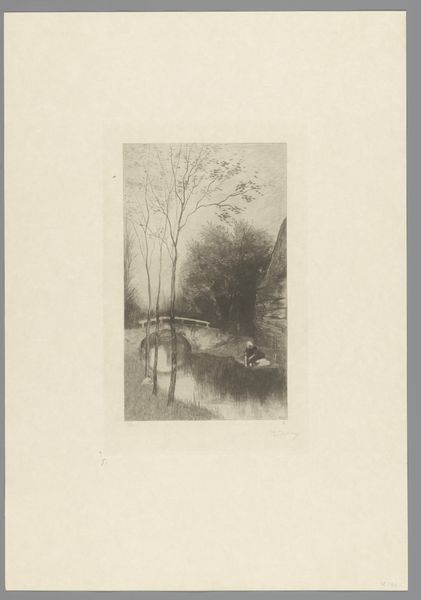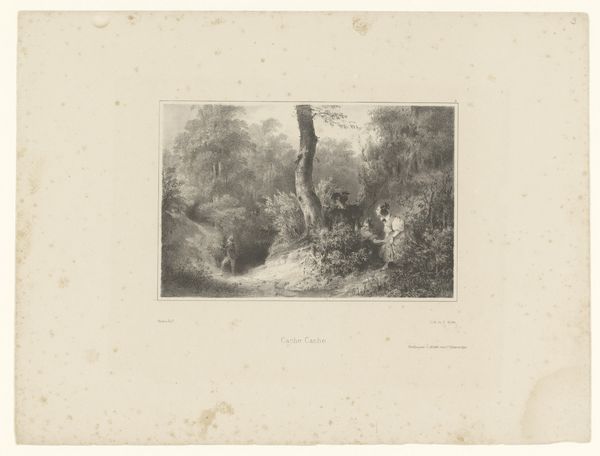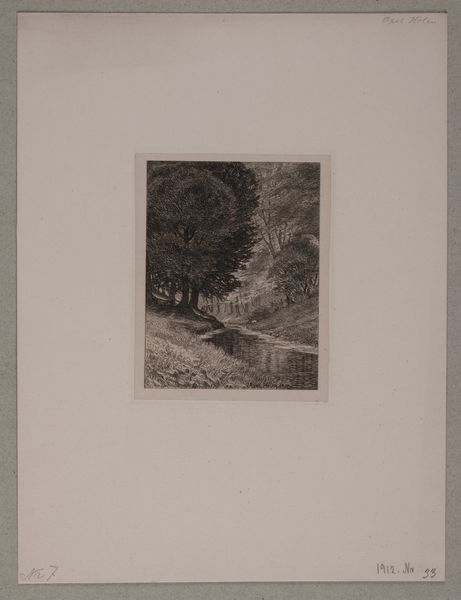
photography, gelatin-silver-print
#
pictorialism
#
landscape
#
photography
#
gelatin-silver-print
Dimensions: height 148 mm, width 119 mm
Copyright: Rijks Museum: Open Domain
Curator: This is G. Nijsse's "Gezicht in de Schoemanskloof, Zuid-Afrika," a gelatin-silver print, dating from before 1905. Editor: My initial feeling? A hushed melancholy. The tones are soft, bordering on sepia, creating a muted atmosphere over this South African landscape. Curator: That muted atmosphere aligns quite nicely with the pictorialist movement's interest in aesthetic effect over strict representation. We see the hand of the artist intervening, softening details. Editor: Absolutely, and the labor involved in manipulating those gelatin-silver prints cannot be overlooked. These are crafted objects meant to be both beautiful and to remind you about their constructed, mediated nature. It moves away from industrial, objective documentation to something warmer, with intention. Curator: It also reminds us how these landscapes were used in early colonial imagery. They served to promote ideas of settlement and opportunity but, in truth, often hid the harsh realities of displacement and labor exploitation during the period. Editor: Exactly, who held the camera matters. It's a crafted view, for whom? Was this distributed, commodified as promotion, or something different? How was Nijsse’s labour in this material production valued in contrast to local, South African labourers? I think of that when viewing images like this. Curator: I agree; framing matters so much. Knowing the image’s socio-political context is essential. A view of this place made its way back to Europe, perhaps influencing opinions or inviting exploitation in some form? That power dynamic exists, in its history of display, acquisition and spectatorship. Editor: Definitely something to be very aware of as we admire this piece, how images can mask complexity and often come at the cost of labor both tangible, the photo production, but more profoundly of the exploited. Curator: It does invite a much needed dialogue on colonial visual histories. Thank you for this enlightening take! Editor: And thank you, for highlighting its cultural and political charge— a photograph’s making and life extending far beyond the click of a shutter.
Comments
No comments
Be the first to comment and join the conversation on the ultimate creative platform.
